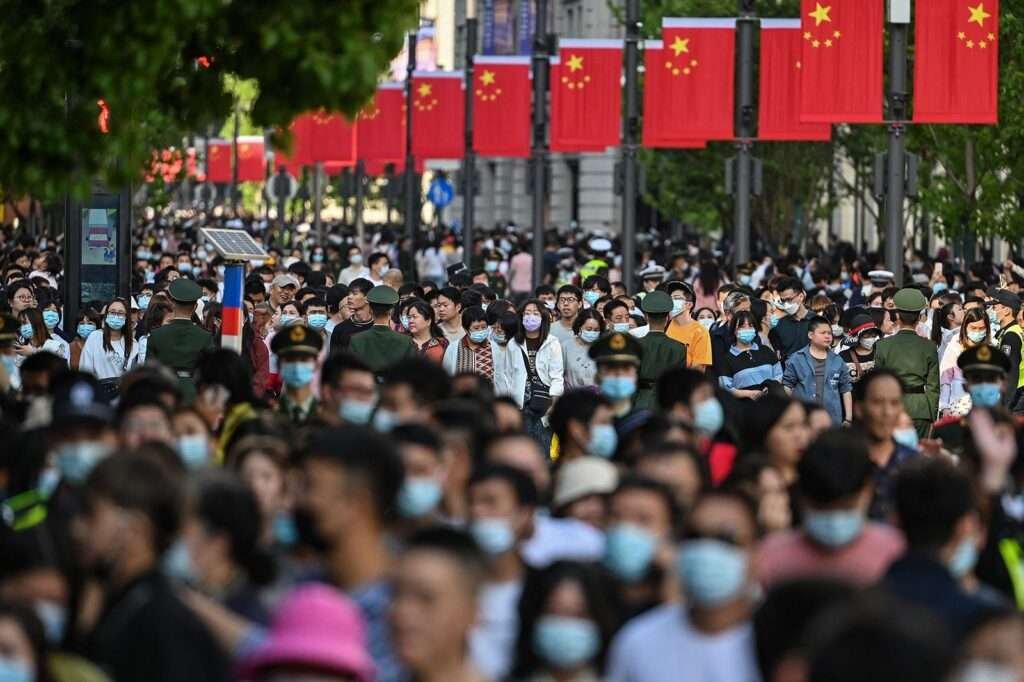China’s reopening is set to provide a welcome boost to global growth, offsetting weakness in Europe and a looming recession in the US. But unlike in 2009, when China’s four-trillion-yuan stimulus helped kickstart a recovery from the Lehman slump, in 2023 there’s a catch a boost to inflation at exactly the moment the Federal Reserve and other central banks race to bring it back under control. The world’s next big inflation surprise is looming in China.
That’s why Kristalina Georgieva, the head of the International Monetary Fund, said this month that China’s pivot from Covid Zero is probably the single most important factor for global growth in 2023, but cautioned on what it might mean for inflation.
“What if the good news of China growing faster translates into oil and gas prices jumping up, putting pressure on inflation?” she said at the World Economic Forum in Davos.
Bloomberg Economics forecasts an acceleration in China’s GDP from 3% in 2022 to 5.8% in 2023. Modeling the relation between China’s growth, energy prices and global inflation suggests that could lift consumer prices by close to a full percentage point in the final quarter of 2023.
If China outperforms, with growth surging to 6.7%, the boost would be closer to two percentage points. Against a backdrop of consumer price inflation that recently touched 9.1% in the US and 10.6% in the euro area, that might not seem like much. In the context of central banks laser-focused on getting price gains back to their 2% target, it matters a lot.
If China’s rebound keeps US inflation stuck around 5% in the second quarter which our model suggests is possible that might frustrate expectations for the Fed to halt hikes at its May meeting. The world’s next big inflation surprise is looming in China.
For the rest of the world, the difference between China in a lockdown slump and China in a reopening boom is an additional $500 billion in demand the equivalent of adding the spending power of another Nigeria to the global economy.
Already, the anticipation of that extra demand is lifting commodity markets, while service industries and retail prepare for the return of Chinese consumers.
Yet data show China’s slump already coming to an end as the Covid wave eases. Factory and services activity both expanded for the first time in four months in January as the economy reopened. The number of patients in hospital emergency rooms is down. “The pandemic has kept us within China’s borders for so long. It’s great we can take family members outside the borders again. For many of them, this is the first time in many years,” she said. “Now that travel normalizes, we can travel more.” The world’s next big inflation surprise is looming in China.
Bloomberg Economics projects a 3% drop in investment, a much smaller drag on the economy than in 2022. Embattled entrepreneurs are also breathing a sigh of relief. Since November 2020, when the initial public offering of fintech giant Ant Group Co. was canceled, China’s flagship tech firms have been slammed with massive fines and stringent regulations. That crackdown has come at a price as confidence slumped.
In October 2022, the Nasdaq Golden Dragon Index was down almost 80% from its peak. As with property, though, Beijing has decided the short-term imperative of restoring growth trumps the longer-term objective of curbing the power of giant corporations. The world’s next big inflation surprise is looming in China. “If wealth doesn’t grow, common prosperity will become a river without a source or a tree without roots,” said Vice Premier Liu He, using his appearance at Davos to pledge renewed support for entrepreneurs. Reflecting the shift, tech stocks have regained some lost ground.
Those shifts are why China’s growth prospects are suddenly looking up, and why policymakers are asking what it means for inflation. Bank of Korea Governor Rhee Chang-yong said on Jan. 13 that China’s reopening could push up oil prices. Fed Vice Chair Lael Brainard used a Jan. 19 speech to flag uncertainty about the implications for inflation, especially in commodities. European Central Bank President Christine Lagarde echoed those concerns at Davos.
Price pressures from China will likely transmit through two channels. First, there’s the risk of a negative supply shock as the initial wave of Covid infections triggers a flurry of absenteeism and factories struggle to maintain operations. The purchasing managers’ index a monthly survey of China’s manufacturing shows that at the end of 2022 delivery times blew out. The risk here is a repeat, albeit on a significantly smaller scale, of the supply snarls that drove the first surge of pandemic inflation.
The second channel will be a positive demand shock as normal life resumes and purchases are amped up. China’s oil imports flatlined over the pandemic. Hopes for stronger demand as highways, train stations and airport terminals fill up have already helped lift oil prices from a trough of $76 a barrel in early December to around $86 in late January. Goldman Sachs’s veteran commodity analyst Jeff Currie said they could go all the way to $105 or higher. Taken together, those shocks could add close to one percentage point to global inflation at the end of 2023, relative to a scenario where China stayed locked down.
For the US, euro area, and UK, Bloomberg Economics analysis points to a boost of around 0.7 ppt — smaller than the global impact but still enough to keep the Fed, ECB, and Bank of England in tightening mode for longer than the market expected. The world’s next big inflation surprise is looming in China.
Uncertainties on both the trajectory for China’s recovery and other forces moving global prices remain significant. But the direction of travel is clear. Back in the dark days of the 2008 global financial crisis, China’s stimulus was an unalloyed positive for the rest of the world. In 2023, China’s reopening promises to be a mixed blessing.
China’s Sichuan frees unmarried people to legally have children
